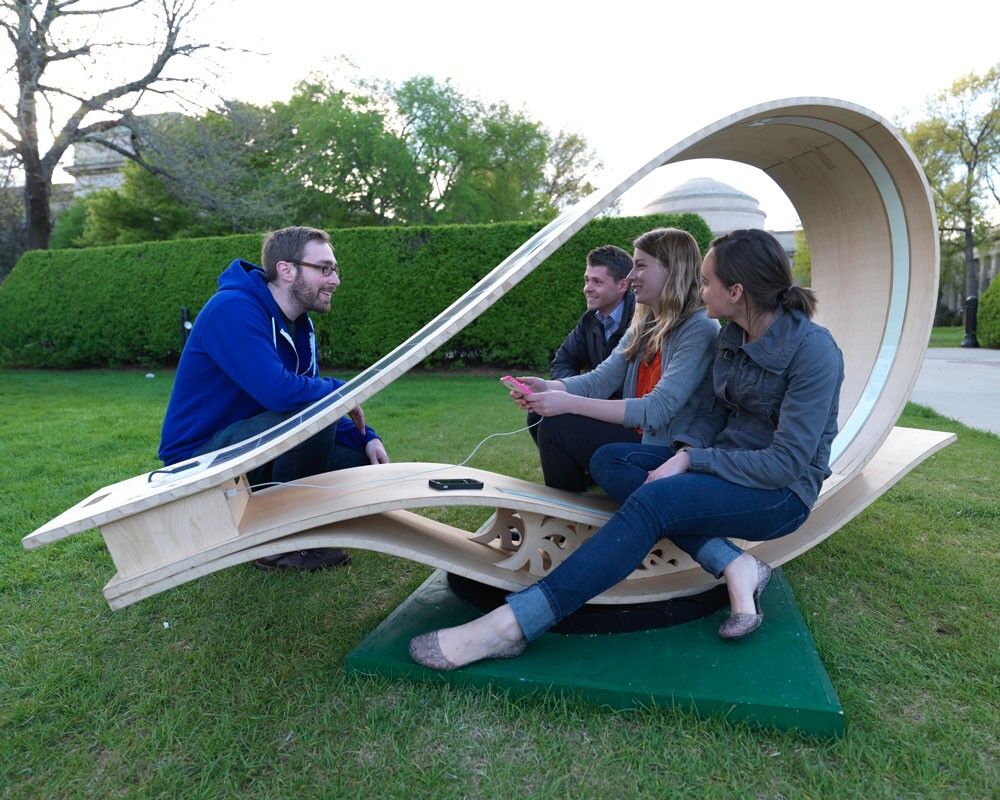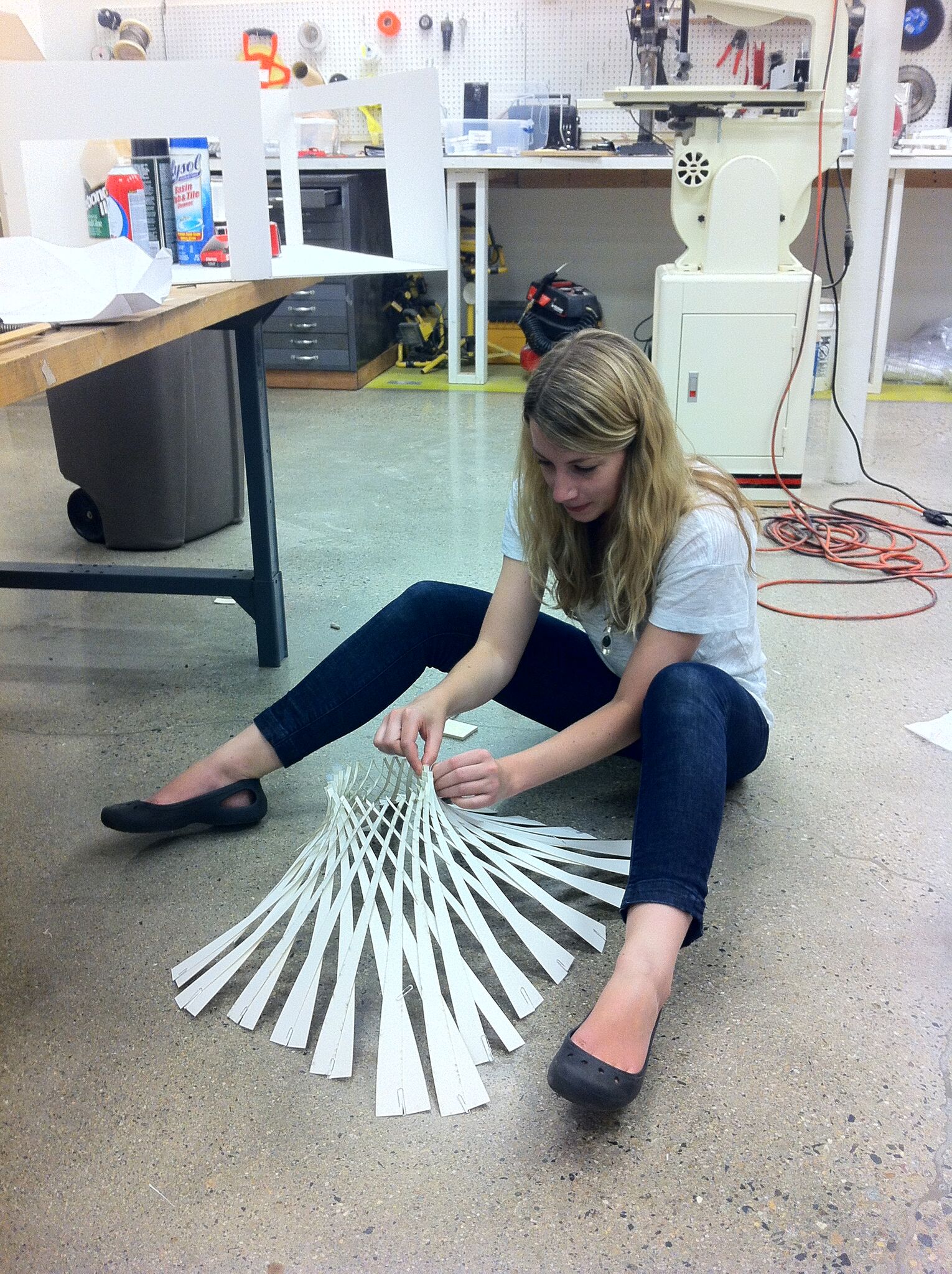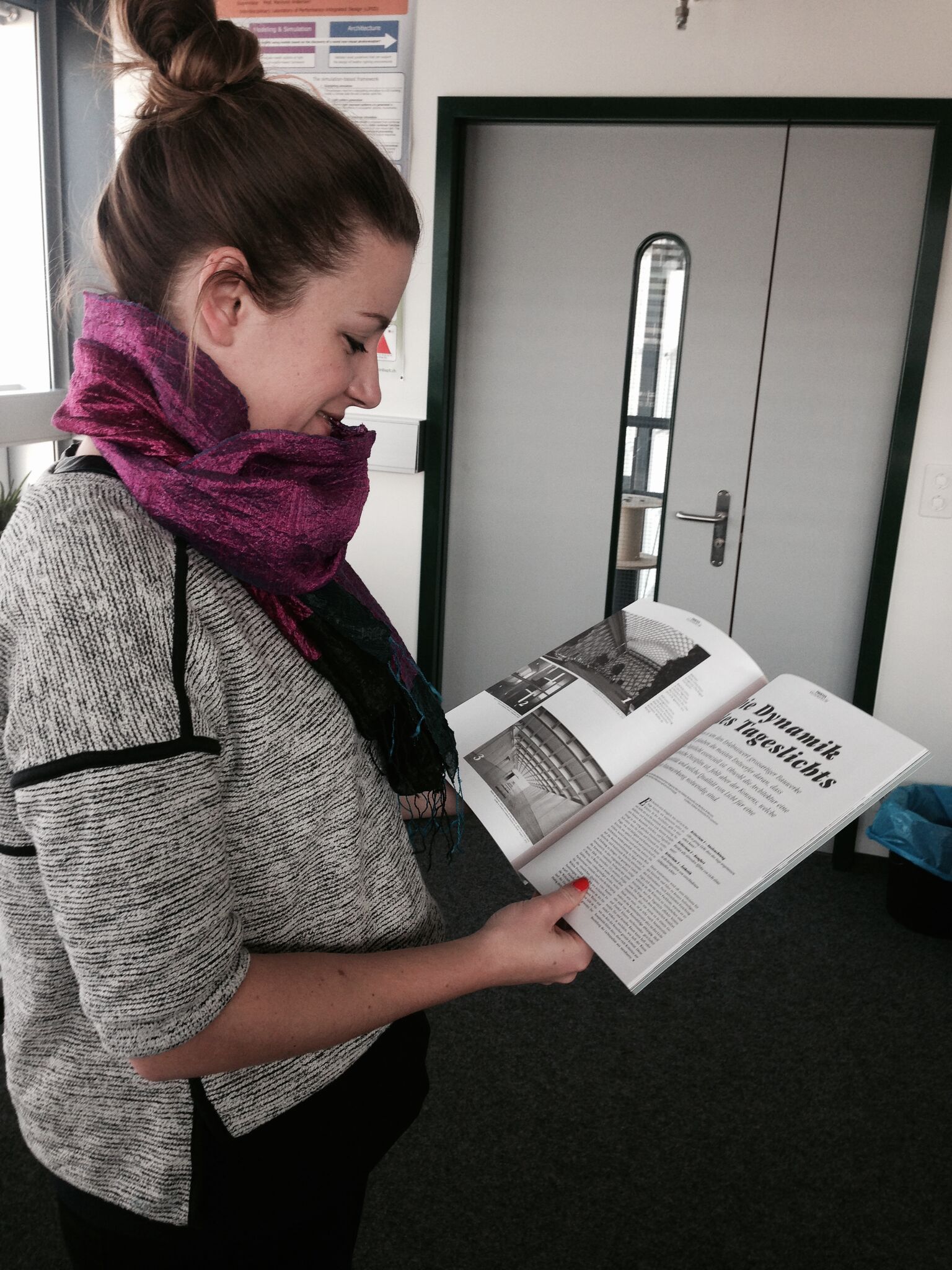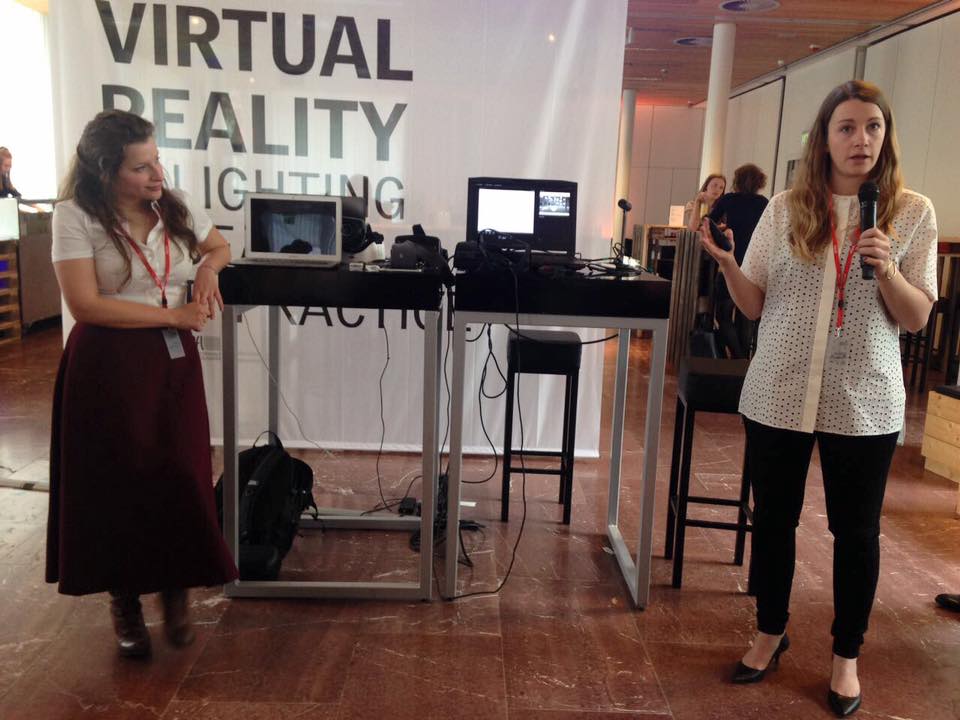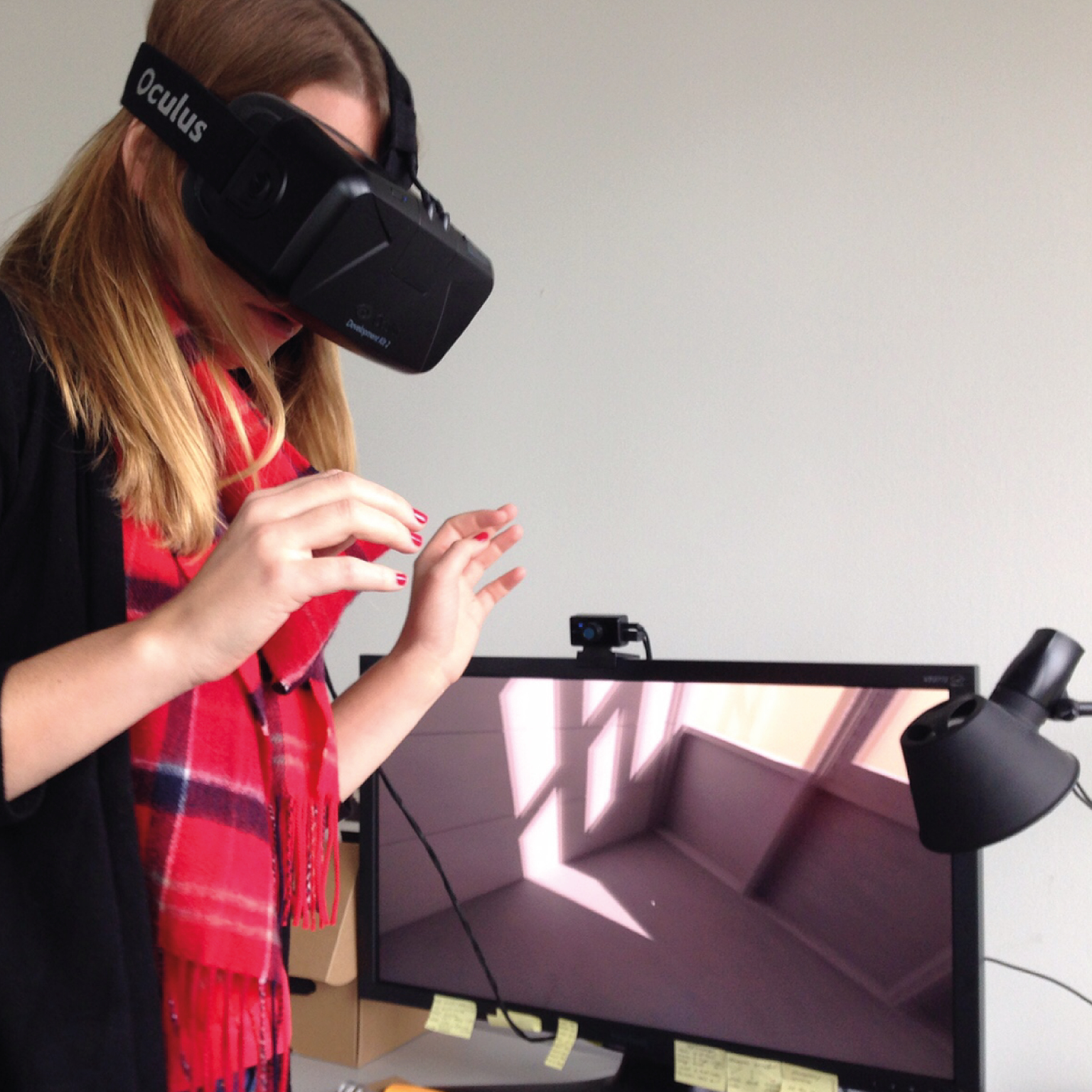Working Together: Siobhan Rockcastle on Learning from Others and Sharing What You Know
By Julia Gamolina Siobhan (a.k.a Shevy) Rockcastle is an Assistant Professor of Architecture at the University of Oregon and a co-founder of OCULIGHT dynamics, a company offering specialized daylight design support. Her research explores topics at the intersection of architectural design, human perception and well-being, environmental dynamics, and building performance focusing on lighting research. She received her PhD in 2017 from the LIPID lab in the Doctoral Program in Architecture and Sciences of the City (EDAR) at the Swiss Federal Polytechnic in Lausanne, Switzerland (EPFL). Siobhan earned her professional BArch from Cornell University in 2008 and her SMArchS degree in Building Technology from MIT in 2011, graduating with a Top Thesis Prize. Her professional work experience includes 2 years of project management at Kennedy & Violich Architecture's MATx in Boston and internships at Epiphyte Lab, Snøhetta NY, Gensler, and MSR design. At OCULIGHT dynamics, Siobhan consults on lighting performance with integrated design solutions for improved occupant well-being. In her conversation with Julia Gamolina, Shevy speaks about exploring her unique interests and tackling challenges, advising young architects to stay open, learn from others, and share what they know.
JG: How did your interest in architecture first develop?
SR: I was always fascinated with the way things work and the way things go together. I never considered myself an artist or somebody who was capable of creating really iconic design work – my sister was the artist in the family and is now a landscape architect - but I was always deeply interested in the complexity of problems and how people work together to solve them.
My father is an architect and I had to go to architecture school as soon as he told my sister and me not to [laughs]. He had explained that a path in architecture was very difficult and leads to a lot of self-doubt. As soon as he said that, we both decided to do it, and both went to Cornell.
A lot of the seeds for what you are doing now were planted there.
My involvement with Cornell’s entry for the 2007 Solar Decathlon, a collegiate competition that challenges student teams to design and build full-size, solar-powered houses, really set my path - I went from thinking of architecture as a high-design exercise with the goal of becoming the next starchitect, to thinking of architecture in terms of how different disciplines can best work together. Solar Decathlon was my first project that was all about collaboration.
I also worked with Dana Cupkova and the late Kevin Pratt for their practice, Epiphyte Lab, learning how to use computational tools and exploring material form. We did a competition for the Lifecycle Building Challenge, designing a foam construction system made out of a kit of parts. This project combined a lot of my different interests – how things go together, the life cycle of materials, parametric design - and probably pushed me in the direction of computation and research and encouraged me to look at MIT.
The seeds for teaching were planted at Cornell too, which is how I came to know you.
Being a First Year Teaching Associate at Cornell was still one of the best teaching experiences I’ve had. I loved being around this intense innate talent and drive to achieve that’s quite unique to Cornell architecture students – I didn’t have to do much to get you guys excited. I was always shocked by how students address a problem differently than I would and learned not to put my own emphasis on process too early – I set up a problem, let people bring their motivation and inspiration to it, and then helped them shape a rigorous process for themselves rather than prescribe the exact set of steps they need to take.
After teaching, you pursued your Masters. Why MIT and what are your take-aways from your time there?
After the Solar Decathlon, I loved the idea of more deeply exploring sustainability and building technology. I was shocked when I got in – the program at MIT seemed to be so engineering heavy and I came from a design-focused school. On my first visit, I felt like I didn’t fit in and that everybody had a lot of technical skill that I didn’t, so I felt like I had to go there to overcome feeling behind [laughs].
At the beginning of my time at MIT, I still saw the environment as this very tectonic, structural thing. Then some time into the program, I took a class on daylighting from a woman who later became my PhD advisor, Marilyne Andersen. She’s a physicist - not an architect - and talked about the environment in terms of health, psychology, well-being, and how the environment can impact our emotional experience. I loved what she presented and jumped from the carbon/material/structure path to working with her and focusing my research on daylight’s perceptual effect on us.
What did you do between your Masters and your PhD?
While still at MIT, I met Sheila Kennedy of Kennedy & Violich Architecture and started working with her on a project for the MIT 150-Year Anniversary. We designed and built solar powered rocking chairs, “Soft Rockers”, using CNC fabrication to make wooden curved pods with integrated solar panels. The concept was that you would sit in them and naturally turn the solar panel toward the sunlight to shade your face – creating a single-axis human-powered sun tracker. After MIT, I worked with KVA on several projects of mostly industrial scale, including a project for 3M where we designed and prototyped a sunlight delivery design for light fixtures that redirect sunlight. KVA is still my ideal model for a firm - they have a design practice, but they also have a research component called MATx, allowing for risky ideas to be tested within the resources and structure of an established architectural firm.
During my time at KVA, I was also teaching through a fellowship at Northeastern. I taught a seminar on daylight design, and the big environmental systems core course. I didn’t know anything about half of the subjects in environmental systems, so I feel like I was studying ten times harder than my students some of the time. I learned so much - I had to teach a two-hour lecture on sewage, so I’m a sewage expert now [laughs].
How did you then end up at the EPFL?
A PhD is not something I ever thought about doing - I kept telling myself that all this research on daylighting and building technology is a side-track, and that I would – as Vince Mulcahy at Cornell always said - “come back to grandma’s cookies” and practice architecture. Then, at MIT, I won a thesis award for my research and daylighting work. I started to think, “Maybe there is some momentum here.”
Later while teaching at Northeastern, I published a paper at the Simulation for Architectural & Urban Design Conference 2012 (SimAUD) and also won best research paper! Springer, a book company, approached us about publishing the thesis of that paper and it became clear to me that there was a lot of interest. The final nudge happened with Marilyne, who kept saying, “You should do a PhD, come to Switzerland.” She’s Swiss and had moved back there the previous year.
Switzerland has a great educational system where they pay you for a PhD, unlike the States where a good education is expensive and can be a sacrifice. The idea of having a better salary and lifestyle as a PhD student than I did as a practitioner was attractive. I also love hiking and skiing, and geographically Switzerland is close to everything for travel, so after I articulated all the pluses, I realized I had to go.
What did your dissertation focus on?
My PhD focused on finding ways to measure the variability and emotional impact of daylight in architecture. I conducted a series of experiments where I showed people rendered scenes with different daylighting conditions, and asked people to rate the scenes based on different subjective attributes - how exciting is this space, how calming is this space. I then designed an algorithm that can predict how people are likely to rate new conditions based on the data we collected from these experiments.
You also worked as an independent daylighting consultant during your time in Switzerland. Can you describe what you did in this capacity?
In collaboration with some others in my lab at the EPFL, I’ve done everything from the basic “do we have enough daylight for code requirements” projects, to “can we simulate the circadian and emotional impacts of light.” I worked on a project with the École hôtelière de Lausanne - they are currently expanding their campus and wanted to create sequences of spaces that have different emotional and wayfinding characteristics. I’ve also done small competitions, most recently an urban scale electric lighting competition in Fribourg, Switzerland. Research is great, but can also be very consuming and singular, so I like having side projects to continue producing design work.
Since completing your PhD, you’ve gotten married and are now living and teaching in Oregon! Tell me a little about this.
The final 10 months have been a whirlwind for me, both personally and professionally. I was offered a position as Assistant Professor at the University of Oregon, won an InnoSeed grant to develop some of my work into software for professional use, got engaged, and got married! I am also now in the final stages of incorporating OCULIGHT dynamics with two colleagues from EPFL – Maria Ámundadóttir & Marilyne, my PhD advisor. We are an all-female technical consulting company between Iceland, Switzerland, and the US, with our first paid client (yay!), a Swiss watch company. To say the past year was an overwhelming time is an understatement, but it has been full of amazing opportunities. I am finally able to build the mix of academic and professional opportunities I care most about, and this is super exciting!
What has been your general approach to your career?
I’ve always taken the path that challenged me and forced me to tackle a problem in a new way. If something seemed like it would be difficult, I told myself that the reward would probably be worthwhile. I also grew to staying open, knowing that I can always learn something from other people, and never assuming that I have the best answer or approach - if you think you do, you’re not allowing yourself to grow and absorb from your environment.
I’ve also made sure to never forget my roots. If you choose to do something interdisciplinary and enter a new field, it’s easy to forget the value of your last field, because your new colleagues might not have the same values. Just because a mathematician or a physicist doesn't value architecture and might think it’s something superficial, doesn’t mean that architecture is not important – it actually means you know something that they might not.
What have been your biggest challenges?
I’ve faced a lot of technical challenges - I didn’t have a comprehensive education in mathematics or computer science, I didn’t then know how to program or code, so I studied all the time and relied on really amazing collaborators. Learning how to defend my work in a quantitative way, rather than qualifying it, was also challenging and new for me.
The biggest challenge though has been learning to communicate and work with people from different backgrounds. I’ve learned not to bristle when somebody says something that I think is wrong, but to try and stay patient and reframe my point until we can come to a common ground. In addition to learning from your colleagues, you can teach them. It’s always worthwhile to be patient and share your experiences.
What about some highlights?
I loved the design-build projects I did with Sheila Kennedy in Boston, the Soft Rockers and the 3M Sunlight Delivery work. Obviously I’m quite proud of my PhD – that’s probably my biggest life achievement to date because I worked for four years in a subject that I had to invent and be very rigorous with. Learning how to follow through on an intensive project, for an extended amount of time, and really diving into all the problems that emerge without knowing ahead of time what they’re going to be, is important.
Then, moving to a new country, learning a new language, and building a whole new social network have all been great highlights! Leaving my family behind was challenging but really good for me – I got to reinvent myself and start over a little bit at a phase in my life where I was moving very quickly in one direction. I’m still not very good at French, but I met my husband there and since he is French-speaking, I’m getting better - it took personal motivation to really pursue learning the language [laughs].
What advice do you have for young architects?
To always push yourself to look at a problem one more time, from a different perspective. One of the best things you can do is to talk to as many people as you can about your and their work - you get a lot of energy learning about other people and different processes. Everyone has something to teach, but don’t forget that everyone is capable of learning from you as well.
A lot of people also view their colleagues and peers as competition, or a threat, as opposed to someone to learn from. Your network and the people you work with are your most important resources, so always take care of and respect the people that have taken time to give you advice and that are working alongside you. People are really important, and I’ve learned to follow the good ones, both personally and professionally.
Also, don’t ever let your work consume you because it’s not everything and your career is really long - you don’t need to “peak” at a certain time, or do all these things “right” to get to the next step. I know a lot of people that were number one in their class and are now at a corporate job that they hate, whereas some of the people that went on totally different side trajectories are now doing some of the most successful and interesting stuff. Just because somebody has a certain background and a certain set of skills, doesn’t mean that they can’t become the most amazing thing in another area, so cut yourself some slack and do what you want.
In the long run, what else would you like to achieve?
I’d love to be a professor and a mother - two ways that I think we leave the biggest impact behind. The people I respect the most are those that have left a positive impact on many others, and for me, the biggest form of success is having the most people in the world say that you impacted them in a good way. I’d also love to maintain this transcontinental footprint, so if I can continue traveling and working abroad, that would be great. Hopefully I’ll also have bilingual children [laughs]. I want to focus on the priorities now, so I can plan everything else around the most important things.
I have no doubt that whatever you do will be very sunny.
Life is always good – it’s just how you look at it. I’m excited –I was in school for a long time, it was time to get out, and I’m really looking forward to giving back.
[author] [author_image timthumb='on']http://architexx.org/wp-content/uploads/2018/01/MA.jpg[/author_image] [author_info] With experience in design, business development, PR, and marketing, Julia Gamolina is focused on communicating identity in the built environment. She is a regular contributor to sub_texxt, interviewing women in architecture on their career development. She is also on the Young Leader's Group committee for the Urban Land Institute (ULI), and is a Founding Member of the Wing. Julia received her Bachelor of Architecture at Cornell University, graduating with the Charles Goodwin Sands Memorial Medal for exceptional merit in the thesis of architecture.[/author_info] [/author]




